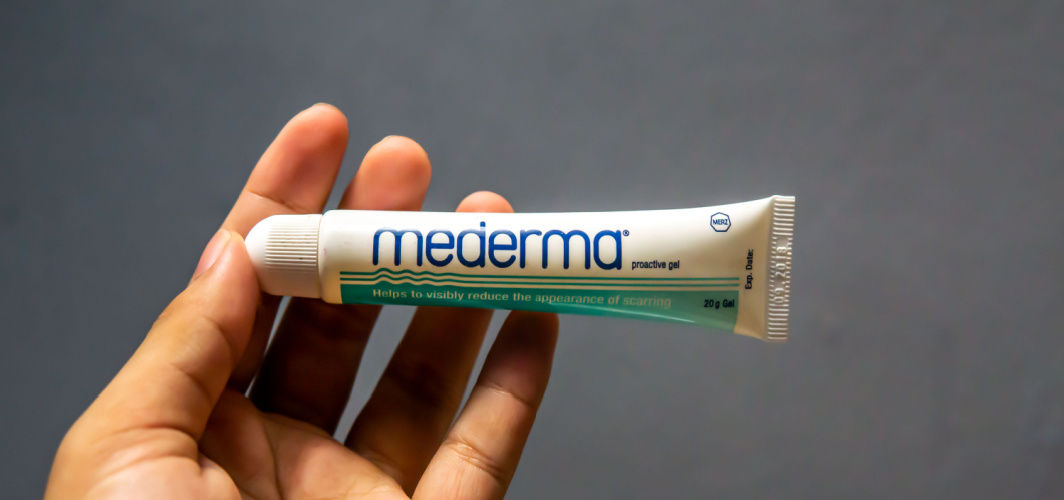General Health
How Does Soframycin Cream Aid In Infection Control?
By Apollo Pharmacy, Published on- 05 September 2023, Updated on -06 August 2024
Share this article
0
0 like

Infection control plays a crucial role in wound healing, as it prevents the spread of harmful bacteria and promotes faster recovery. One effective tool in infection control is Soframycin Cream, a topical antibiotic specifically designed to treat infections. The powerful ingredients in Soframycin cream provide a dual-action approach to infection control. Let's delve into the key ingredients of Soframycin Cream and explore how they aid in infection control.
What is Soframycin Cream?
Soframycin Cream is a widely used topical antibiotic that has been a trusted choice for many healthcare professionals when it comes to infection control. Developed in the mid-20th century, Soframycin Cream has a long history of safe and successful use in treating various skin infections.
Key Ingredients in Soframycin Cream
The key active ingredient in Soframycin Cream aids in the treatment of various skin infections.
1. Framycetin Sulphate
Soframycin Cream contains 1% Framycetin Sulphate, which is a type of antibiotic. It belongs to the class of drugs known as aminoglycosides.
How does it work?
Framycetin Sulphate works by inhibiting the synthesis of proteins in bacterial cells. This prevents the bacteria from multiplying and spreading, ultimately leading to their death. It is particularly effective against gram-negative bacteria, including Escherichia coli and Pseudomonas aeruginosa.
Soframycin Cream with Framycetin Sulphate is commonly used to treat a wide range of bacterial skin infections, such as:
- Cuts
- Wounds
- Burns
- Impetigo
It is also effective against certain eye infections like conjunctivitis caused by susceptible organisms.
2. Beeswax and Liquid Paraffin Base
Beeswax and liquid paraffin are key ingredients in Soframycin Cream that play a vital role in its effectiveness in infection control. The role of beeswax and liquid paraffin in soframycin cream include:
- Beeswax acts as a natural emollient, creating a protective barrier on the skin's surface.
- Liquid paraffin, also known as mineral oil, helps soften and moisturise the skin.
- These emollients in Soframycin Cream assist in soothing and hydrating the affected area, reducing dryness and itching.
- Beeswax and liquid paraffin help enhance the penetration of the active ingredient, framycetin sulfate, into the wound site. This improves its ability to fight against bacteria and prevent further infection.
3. Preservatives and Stabilisers
Preservatives and stabilisers help prevent the growth of microbes within the cream, ensuring its effectiveness in treating infections. Types of preservatives used in soframycin cream:
- Methylparaben: This commonly used preservative helps inhibit the growth of bacteria and fungi. It prevents contamination of the cream during storage and usage.
- Propylparaben: Similar to methylparaben, propylparaben is an effective preservative that extends the shelf life of the cream by preventing microbial growth.
- Sodium metabisulfite: This stabiliser not only helps maintain the cream's stability but also acts as an antioxidant. It protects the active ingredients from degradation, ensuring their potency.
- Citric acid: Apart from enhancing the stability of the cream, citric acid also helps maintain its pH level. It ensures that the cream remains effective in killing bacteria while being gentle on the skin.
How to Use Soframycin Cream?
When using Soframycin Cream, it's essential to instructions or the directions on the product label carefully.
1. Treating Skin Infections
- Cuts and wounds: Soframycin Cream can be applied on clean and dry cuts, wounds, or lacerations to prevent bacterial growth and promote healing. It creates a protective barrier that fights against common pathogens.
- Burns: Soframycin Cream can soothe and heal burn wounds caused by heat, radiation, or chemicals. It helps prevent infection and reduce scarring.
- Abrasions: For abrasions or scrapes, applying Soframycin Cream can help prevent bacterial contamination and reduce the risk of infection.
The cream should be applied 2 to 3 times a day or as directed by your healthcare professional.
2. Prevention and Control of Wound Infections
Wound infections can cause pain, delay healing, and even lead to systemic complications. Soframycin Cream effectively kills bacteria commonly associated with wound infections, providing an added layer of protection against such pathogens.
3. Benefits of Using a Cream-based Formulation
- Cream-based formulations offer advantages over other forms of topical antibiotics, such as ointments or gels.
- Creams are easier to apply, spread evenly, and get absorbed quickly into the skin.
- The creamy texture of Soframycin Cream ensures maximum contact with the wound, promoting better drug delivery for effective infection control.
Side Effects of Soframycin Cream
Soframycin Cream is generally considered safe for topical use. However, it may cause some common side effects such as:
- Redness
- Itching
- Burning at the application site
- Hives
- Swelling
- Rash
Precautions to Consider when using Soframycin Cream
It's essential to follow precautions to ensure the safe and effective use of Soframycin cream.
- Inform your doctor or pharmacist about any known allergies you have, especially if you are allergic to any antibiotics or other topical medications.
- Avoid contact with eyes, nose, mouth, or open wounds. If accidental contact occurs, rinse thoroughly with water.
- Do not apply the cream on large areas of broken or damaged skin.
Tips for Wound Healing
Proper wound care is essential for optimal infection control and wound healing. By following a few simple tips, you can minimise the risk of infection and promote faster healing.
- Clean the wound: Start by gently rinsing the wound with clean water to remove any dirt or debris. Avoid using harsh soaps or antiseptics, as they can damage healthy tissue.
- Use a sterile dressing: After cleaning the wound, apply a sterile dressing to protect it from further contamination. Make sure to use gloves while handling the dressing to maintain proper hand hygiene.
- Change the dressing regularly: It's important to change the dressing regularly, especially if it becomes wet or soiled. This helps prevent bacterial growth and facilitates faster healing.
- Keep the wound moist: Contrary to popular belief, keeping wounds moist promotes faster healing. You can use specialised wound care products like soframycin cream that aid in infection control and wound healing.
Conclusion
Exploring the key ingredients of Soframycin cream has shed light on how they aid in infection control. By understanding the benefits of each ingredient, individuals can make informed decisions about using this topical antibiotic for wound care. It is important to note that Soframycin cream should be used under the guidance of a healthcare professional, especially for deep or severe wounds. Remember, your health is valuable, and prioritising proper wound care is essential for quick healing and infection control.
FAQs
Q. Is Soframycin cream suitable for all types of skin infections?
Soframycin cream is commonly used for treating bacterial skin infections, such as impetigo, infected cuts, and wounds. However, it is important to consult a healthcare professional to determine if this cream is appropriate for your specific condition.
Q. Can I use Soframycin cream on open wounds?
Yes, you can use Soframycin cream on open wounds as it helps prevent infection and promotes wound healing. However, it is recommended to clean the wound thoroughly before applying the cream.
Q. Are there any side effects of using Soframycin cream?
Soframycin cream may cause certain side effects such as skin irritation, redness, or itching. If you experience any severe reactions or allergies, discontinue its use and seek medical advice.
Q. How should I apply Soframycin cream?
First, clean the affected area with mild soap and water. Then, apply a thin layer of the cream onto the affected area and gently massage it in. It is usually recommended to apply the cream two to three times a day.
Q. Can Soframycin cream be used during pregnancy?
It is generally safe to use Soframycin cream during pregnancy, but it is advisable to consult your healthcare provider before using any medication while pregnant or breastfeeding.
General Health
Leave Comment
Recommended for you

General Health
Mederma Cream: Uses And Side Effects
Explore Mederma Cream's versatile uses and be informed about potential side effects. Make confident choices for your skincare regimen.

General Health
Pirola: Can COVID-Vaccine Protect You Against This New COVID Strain?
Discover the latest updates on the effectiveness of the COVID-19 vaccine against Pirola.

General Health
10 Best Face Wash for Men in India
Discover the 10 best face washes for men in India in 2023! From deep cleansing to oil control, these top 10 products will help you achieve clear and healthy skin.
Subscribe
Sign up for our free Health Library Daily Newsletter
Get doctor-approved health tips, news, and more.
